Top 10 Most Beautiful Historical Sites in Malta
There are so many historical monuments to see in Malta that you will struggle to squeeze them all in. Marvel at the baroque magnificence of the church, breathe ... read more...the cold air of an ancient underground burial cave, or meet a soldier during a live reenactment of military cookery. So, whether tourists are new to Malta's history or seasoned visitors, immerse yourself in the past with our selection of the 10 Most Beautiful Historical Sites in Malta.
-
Grandmaster's Palace is a palace in Valletta, Malta, formally known as The Palace. It was erected as the Grand Master of the Order of St. John's residence during the 16th and 18th centuries. It became the National Palace when the knights were expelled by Napoleonic France and became the Governor's Palace during the period of British rule that began in 1800.
The Grandmaster Palace is the city's largest palace in a district in the heart of Valletta. Its facade is located on Republic Street, directly across from the Main Guard Force in St. George's Square, and is encircled by Archbishop Street, Old Theater Street, and Business Street.
The main facade of Grandmaster's Palace was built in a simple and austere Mannerist style, characteristic of the architect, Cassar. Upon arrival, visitors may notice the asymmetrical facade on either side due to the many changes made to the building over the centuries, and because the decorative features do not match the corners of the building home.
During the rule of Grandmaster Jean de la Cassière, the Throne Room, previously known as the Great Hall, was constructed. It has been utilized to accommodate diplomats and high-ranking officials by succeeding Grandmasters. It was known as the Hall of St Michael and St George during the British administration, after the Order of St Michael and St George, which was created in 1818 in Malta and the Ionian Islands. The President of Malta now utilizes it for state duties now. In 1818, the British entirely altered this hall by putting neo-classical architectural elements created by Lieutenant-Colonel George Whitmore on the walls. In the early twentieth century, they were removed. The minstrel's gallery is assumed to have been moved here from the palace chapel, where it was most likely originally housed. The original coffered ceiling and late 18th-century-style chandeliers are particularly noteworthy. The Tapestry Hall, the State Dining Hall, the Ambassador's Room, and the Page's Waiting Room are the additional staterooms.
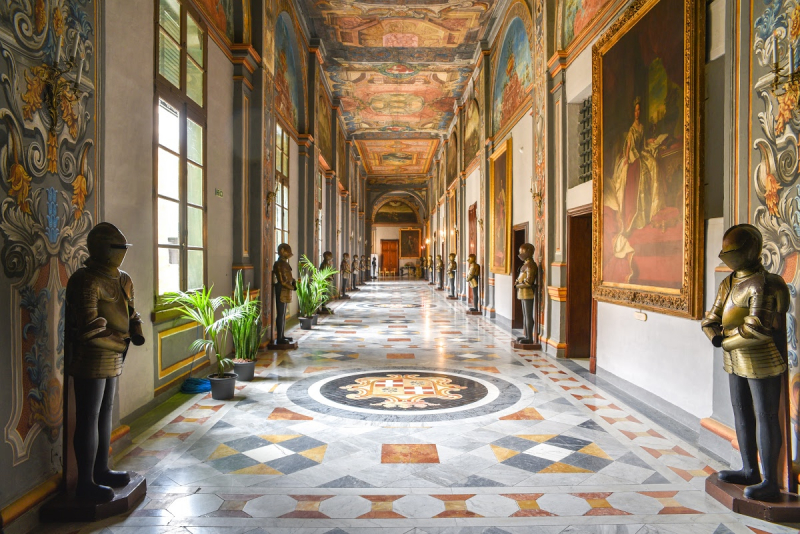
Photo: artsandculture.google.com Video: ITS Multimedia Projects -
St John's Co-Cathedral is a Roman Catholic co-cathedral dedicated to Saint John the Baptist in Valletta, Malta. It was commissioned by Grand Master Jean de la Cassière and erected by the Order of St. John between 1572 and 1577 as the Conventual Church of Saint John. The church was designed by Girolamo Cassar, a Maltese architect who is responsible for some of Valletta's most notable structures. Mattia Preti and other Baroque artisans redecorated the interior in the 17th century. The church's interior is regarded as one of Europe's most beautiful examples of high Baroque architecture.
The church's facade was designed in architect Girolamo Cassar's classic Mannerist style. Its modest front, encircled by two huge bell towers, has a symmetrical design. On two sides, Doric columns support an open balcony from which the Grand Master frequently receives visitors on special occasions. Two vacant niches may also be seen on the side. The niches and columns contrast with the remainder of the Mannerist architecture on the outside. Overall, the exterior of St. John's Co-Cathedral is austere and fortress-like, reflecting both Cassar's military engineering style and the spirit of the Order in the years after the Great Siege of Malta in 1565.
In stark contrast to the front, the inside of the church is exceedingly opulent. The interior of St. John's Co-Cathedral was heavily adorned during the Baroque period by Mattia Preti, a Calabrian artist, and knight. Preti created beautifully carved stone walls as well as painted domed ceilings and side altars depicting scenes from John the Baptist's life. The designs on the ceiling adjacent to each column were intended to be regarded as three-dimensional sculptures, but closer examination reveals that the artist effectively generated the illusion of three-dimensional space by using your ball and location. It's also worth noting that the engravings are all done on-site rather than being carved separately and then mounted on a mortar wall.
St. John's Co-Cathedral is a short walk from the bus terminus near the City Gate in central Valletta. The primary entrance of the church is on St John's Square, although the visitor's entrance is on Republic Street, opposite the Law Court, from Great Siege Square. The church is open to the public from 10:30 a.m. to 14:30 p.m. Monday through Friday, and from 09:30 a.m. to 12:30 p.m. on Saturdays. Sundays and public holidays are closed. Adults pay €15, students and seniors pay €7.50, and children under the age of 12 pay nothing when accompanied by an adult, and audio tours are provided. Maltese, English, Italian, French, German, Spanish, Japanese, and Russian are all available. And of course, the admission price is waived for those who visit one of the 10 Most Beautiful Historical Sites in Malta just to attend Mass.
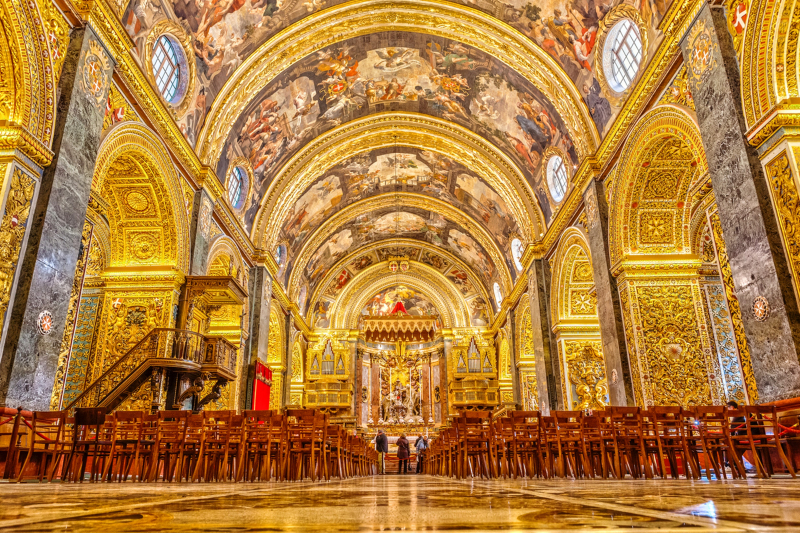
Photo: itinari.com Video: MaltaWalks -
The temple complex at Gganjita is undoubtedly the most important of the approximately 30 temples on the islands of Gozo and Malta. The Gantija Temple complex is a one-of-a-kind ancient structure situated in the center of a unique archaeological setting on the island of Gozo, the Xagra plateau. It is made up of two constructions that were constructed between 600 and 200 BC.
The complex consists of two temples that are connected by a single border wall. These Maltese temples are the finest maintained. The elder of the two temples here is the oldest of the megalithic temples, despite being remarkably well maintained. Between 5,600 and 5,200 years ago, the Ggantija Temples were constructed.
Ggantija Temples was formerly supposed to be the world's oldest archaeological monument, dating back to before Stonehenge and the Egyptian pyramids. Göbekli Tepe, a Turkish archaeological monument, is currently thought to date from the Ggantija Temples. It's hardly surprising that the site's name originates from the Maltese word meaning enormous, given the size of the stones on the wall. The biggest stones used in any temple may be found here, with some weighing more than 50 tons. Globigerina and locally obtained coralline limestone were both utilized by Neolithic buildings. In Ggantija, hard coralline limestone is commonly utilized, whereas softer Globigerina limestone is used for interior furnishings such as doors, altars, and ornamental panels. Despite its antiquity, the monument is still in fine working order.
The translation center, which provides visitors with the chance to learn about many elements of Neolithic life, leads to the entrance of the Gantija Temple. A selection of the most notable objects unearthed at several prehistoric sites in Gozo is also on display in the center.
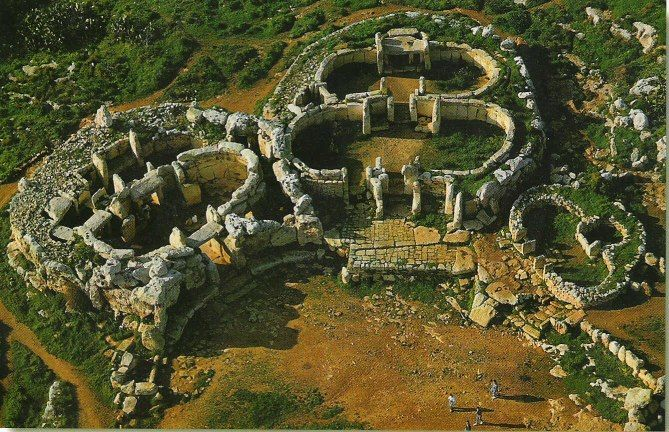
Photo: i.pinimg.com Video: Heritage Malta -
These temples may be found in Qrendi, on the west side of the island. It is not far from Valetta, just a 30-minute walk away, and it's an excellent alternative if we have a number of days in Malta. Visitors may spend a few hours learning something new while also visiting a Unesco World Heritage Site and taking in the breathtaking scenery.
With an unequaled location on top of sea cliffs, the megalithic temples of Hagar Qim and Mnajdra are the best-preserved and most evocative of Malta's prehistoric ruins. To protect the temples from the impacts of the weather, permanent tent-like canopies have been built over them.
There is a hands-on visitors center that explains the history of the constructions, a kids' section where youngsters can build a temple out of blocks, and an evocative but not particularly instructive 4D video introduction. After passing through the visitors' center, visitors come to Hagar Qim Temple, which is the first temple tourists see. The facade has been repaired, and the trilithon entrance (two upright stones with a third over the top as a lintel) offers an indication of what it would have looked like in the past. The temples were formerly covered with roofs, most likely corbelled stone vaults, but these have since crumbled. Before entering, you will see the largest megalith in the temple, weighing more than 20 tons. The temple is made up of a succession of circular, interconnecting chambers that aren't connected in any way. A modest altar with plant themes can be found in the first compartment on the left, and other altars can be found in the second compartment. The National Museum of Archaeology in Valletta has the 'fat lady' statuettes and the 'Venus de Malta' figure that were discovered here.
Mnajdra Temple, located 700 meters downhill from Hagar Qim Temple, was constructed in a more complex manner, consisting of three nearby temples, each with a triangle layout and facing in a different direction. The oldest temple is the little one on the right, which is aligned with Filfla Island to the southwest. The smallest temple is the center one, which faces southeast. All of the artifacts date from 3600 to 3000 BC. During the summer, Malta Heritage offers special guided visits to the Hagar Qim and Mnajdra Temple to learn more about these connections.
There are several signposted nature paths in the region surrounding the temples that provide breathtaking views of the sea. A 17th-century watchtower and a memorial to Sir Walter Congreve (Governor of Malta 1924–27), who was buried at sea off this point, are located on the cliff in the southeastern portion Mnajdra. To get to Gar Lapsi, go west along the rocks. Filfla, 5 kilometers distant, visitors may easily see the deserted island.
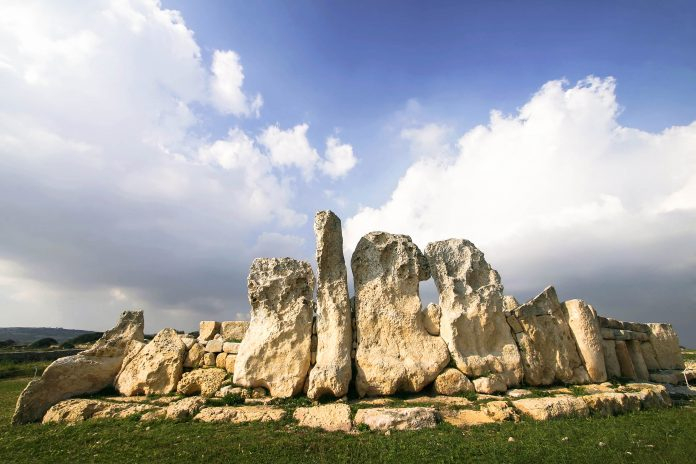
Photo: franks-travelbox.com Video: MyTravelShoesOn -
Fort Rinella was the most technologically advanced military machine of its day when it was built by the British in 1878. It could fire a massive 100-ton gun every six minutes, or a one-ton cannon up to eight miles into the air, thanks to a coal-fired steam-driven hydraulic system. Under the age of 21 inches (65cm) of protection.
Fort Rinella is one of four 100-ton cannons erected to guard harbors in Malta and Gibraltar. These fortifications were required in order to construct two strong Italian battleships, the Duilio and Dandalo, each equipped with four 100-ton cannons in a rotating turret. Britain exploited the Mediterranean as a rapid route to India at the time, and it was feared that Italy's expanding naval strength might tip the regional power balance. Sir William George Armstrong, a prominent Victorian British inventor, and manufacturer from Newcastle, initially designed the 100-ton cannon for Italy. The 100-ton gun is the world's most powerful warhead cannon. It has a caliber of 17.72 inches (45cm) and is 35 feet (11m) long. It detonated a quarter-ton of black powder in a long-range explosion. The expense of each batch was the equivalent of 2,700 soldiers' daily pay.
Fort Rinella has lately undergone substantial restoration and enhancement. A new 20-minute audio-video film detailing the history of the stronghold and its cannon has been included in all guided tours. Fort Rinella comes to life on Saturday at 14 a.m., replete with late 19th-century Victorian troops who will lead you on a cartoon tour of the stronghold. Military signals, rifle shooting, bayonet training, military cookery, and more are all part of this trip, which blends excellent education with live and spectacular historical reenactments. During this expedition, several archaic weapons and equipment were used. All of them are intended to offer passengers a memorable and delightful experience.
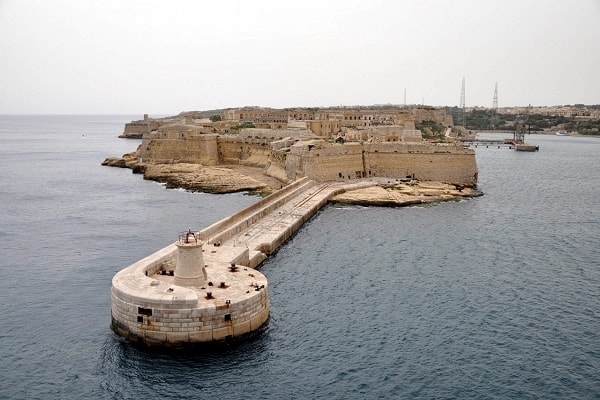
Photo: whatsoninmalta.com Video: Uma Brasileira Em Malta -
Hal Saflieni Hypogeum is a Neolithic subterranean building near Paola, Malta, that dates from the Saflieni period (3300-3000 BC) of Maltese prehistory. Hypogeum, which literally means "underground" in Greek, is a common name for it. The Hypogeum is reported to be a sanctuary and graveyard, with the remains of more than 7,000 persons recorded by archaeologists. The site also created the megalithic Temples and the Xagra Stone Circle and is one of the best surviving instances of Maltese temple-building tradition.
In 1902, laborers were dismantling tanks to create a new residence that had a damaged roof when they found Hypogeum by accident. Manuel Magri oversaw the Museum Committee's excavation, which began in November 1903 and conducted the initial structural investigation. Part of Hal Saflieni Hypogeum's material, including furniture and human bones, was removed during the excavation. Magri died in 1907 while on a trip in Tunisia, and his report on Hal Saflieni Hypogeum was never found. Sir Themistocles Zammit resumed the excavations, trying to recover all he could. In 1910, Zammit began writing a series of studies, and he kept excavating until 1911, depositing his finds at Valletta's National Archaeological Museum. Visitors were initially admitted to the Hypogeum in 1908, while excavations were still proceeding.
Hal Saflieni Hypogeum is fully subterranean and is made up of three stacked stories hewn from soft globigerina limestone, with hallways and chambers connected by a maze-like system of steps, ligaments, and doors. The highest level is supposed to have been occupied first, followed by the expansion and excavation of the middle and lower floors. Some of the chambers in the center appear to be inspired by modern megalithic temples located all around Malta.
In Malta, Hal Saflieni Hypogeum and its museum are major tourist destinations. The museum doors open at 9 a.m., but the ticket line begins to form at about 8 a.m. The National War Museum in Valletta has 20 "last-minute" tickets available for the next day. As a result, visitors should reserve well in advance, as the number of persons allowed per day is limited.
In September 2016, the facility was closed for a 1.1 million euro refurbishment, which was partially funded by a grant from Iceland, Norway, and Liechtenstein. On April 28, 2017, the Minister of Culture officially opened the renovated museum, which features a new climate control system for the Hypogeum as well as an expanded visitor center. After shutting down for a year to enhance its environmental management system, Hal Saflieni Hypogeum returned in May 2017.
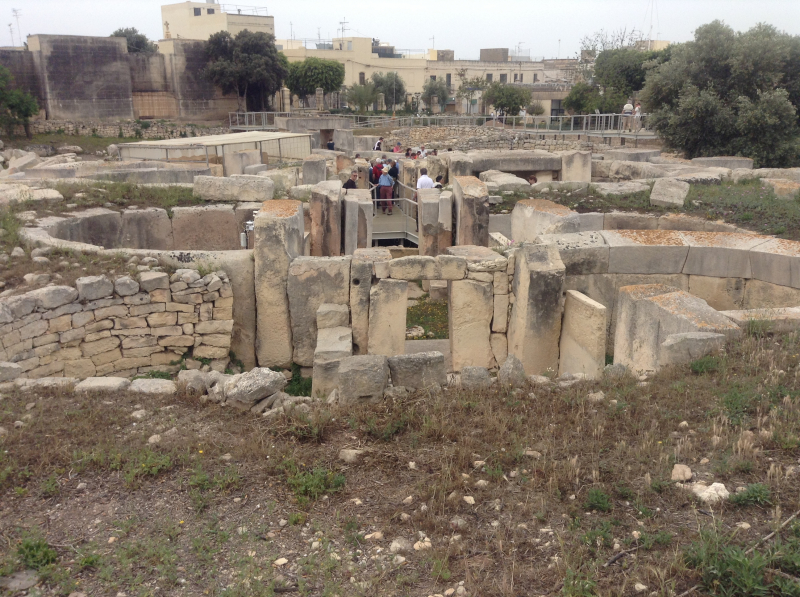
Photo: the-tin-man.com Video: World Heritage Journey -
The Auberge de Castille is a historic building in Valletta, Malta, that today houses the Prime Minister's office. The Auberge is situated on Castile Place, near Saint James Cavalier, the Malta Stock Exchange, and the Upper Barrakka Gardens, as well as at Valletta's highest point, with views of Floriana and the Grand Harbor area.
It replaced a 1574 edifice established to knight the house of the Order of Saint John from the languages of Castile, León, and Portugal. It was built in the magistrate-style Baroque of Manuel Pinto da Fonseca in the 1740s. The word Castille is commonly used as a metaphor for the Prime Minister and his office, similar to how the White House alludes to the President of the United States' Executive Office. Under the direction of Grand Master Manuel Pinto da Fonseca, the ancient Auberge de Castille was destroyed and substantially rebuilt in Spanish Baroque style between 1741 and 1744. The new structure was designed by Andrea Belli and constructed under the supervision of Capomastro Domenico Cachia. In 1791, several alterations were made, including the opening of the main door.
The Auberge de Castille is a two-story structure with a rectangular form and a central courtyard built in the Baroque style. Pilasters in the center bays and simple paneling in the outer bays divide the façade into eleven bays. Within recessed panels, ornate windows are placed. The structure features a continuous cornice and rusticated corners. A flight of stairs leads up to the main entrance, which is flanked by columns that carry the arms and bronze bust of Master Manuel Pinto da Fonseca. Above the bust is a casting window, which is protected by a Pinto symbol. The arms of Castile and León, as well as Portugal, are shown in the middle above the window. Two ancient sutras, presently utilized for adornment, stand right in front of the door.
The Auberge de Castille has been called "perhaps the best building in Malta". Both the exterior and the interior, particularly the elaborate facade and the stairs up to the entryway, are beautifully designed.
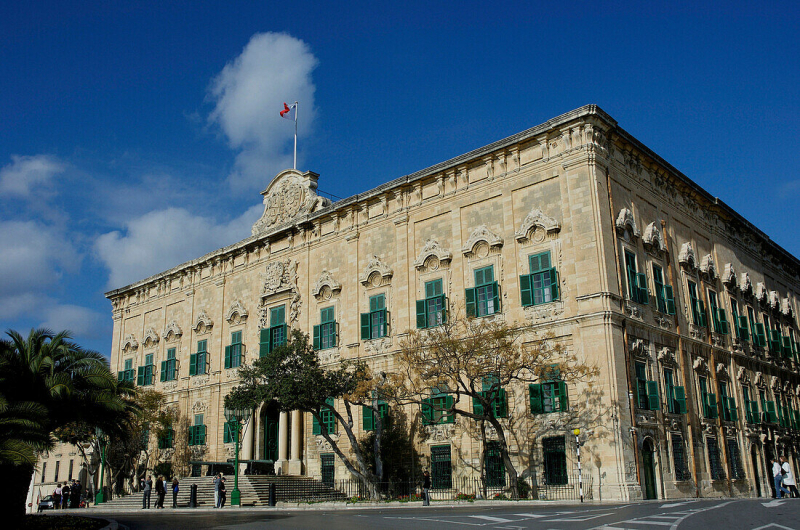
Photo: lookphotos.com Video: Englishman in Malta -
The National Museum of Archaeology or Auberge de Provence is a Maltese museum in Valletta that has artifacts dating back to prehistoric periods, as well as a significant numismatic collection.
In 1958, Agatha Barbara, the Minister of Education at the time, declared the Auberge de Provence a National Museum. Captain Charles G. Zammit was the museum's initial superintendent, and it had an archaeological collection on the ground floor and fine art on the upper floor. The art collection was relocated to the newly built National Museum of Fine Arts in the Admiralty House building on South Street in Valletta in 1974, and the Auberge de Provence was renamed the National Archaeological Museum. In 1998, the museum was renovated and updated. The relics are housed in climate-controlled exhibitions that adhere to current conservation standards.
The museum houses a diverse collection of items dating from Malta's Neolithic (5000 BC) to the Phenicia periods (400 BC). The first instruments used by pre-humans to aid their everyday labor and to portray animals and people were on exhibit; these elements not only show off the island's great artistic talents but also provide insight into their daily existence. 'The Woman Sleeping in the Forest' from al Saflieni Hypogeum, 'The goddess of Malta' from Hagar Qim, bronze daggers from Tarxien Temple's Bronze Age courses, Horus and Anubis necklaces, and human coffins from the Phenicia Period are among the highlights.
The National Archaeological Museum also acts as a springboard for other archaeological sites in Malta, providing tourists with an excellent introduction to the island's prehistoric and early history. Another Punic hall, as well as other halls related to the Roman and Byzantine periods, are now under construction in Malta.The National Archaeological Museum is open Monday through Sunday from 9 a.m. to 5 p.m. from January to September, with the last admittance at 4:30 p.m. During the months of October, November, and December, the museum is open from 9 a.m. to 6 p.m., with the last admittance at 5:30 p.m. Good Friday, Christmas Eve and Day, and New Year's Eve and Day are all closed.
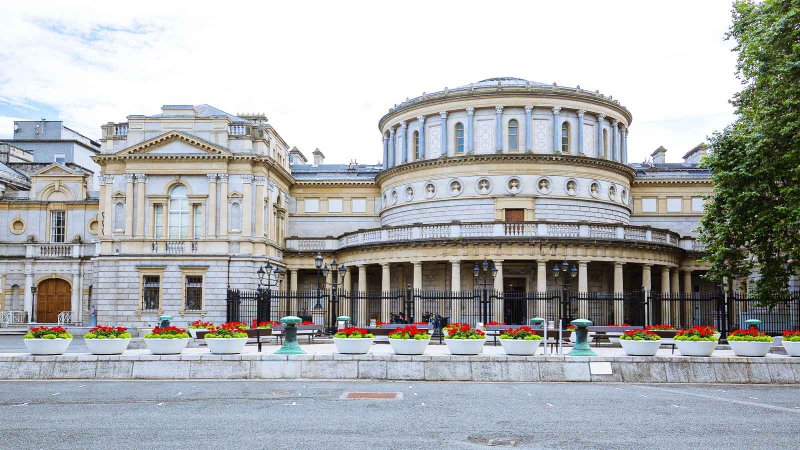
Photo: dublincitihotel.com Video: VisitMalta -
Valletta is Malta's administrative center and capital. Valletta, Europe's southernmost capital, is located on the main island, between Port Marsamxett in the west and Grand Harbor in the east. With only 0.61 square kilometers, Valletta has also become the European Union's smallest capital.
Knights Hospitaller constructed Valletta's 16th-century structures. During the Siege of Malta, the city is called after Jean Parisot de Valette, who was successful in defending the island against the Ottoman invasion. Despite World War II, which left major wounds on the city, including the demolition of the Royal Opera House, the city was founded on Baroque architecture with aspects of Mannerist, Neoclassical, and Modern architecture. In 1980, UNESCO designated the city as a UNESCO World Heritage Site. With 320 monuments, it is now one of the world's most densely populated regions. Valletta, often known as the "open-air museum," was crowned European Cultural Capital in 2018. Valletta is also Europe's sunniest city. Along with the splendor of Baroque houses, gardens, and churches, the city is known for its defenses, which include forts, curtains, and cavalry squads.
Valletta's street and square architecture range from the mid-16th century Baroque period through modernism. The city is the island's primary cultural hub and is home to a unique array of churches, palaces, and museums, as well as being one of the city's most popular tourist destinations. When British Prime Minister Benjamin Disraeli visited the city in 1830, he characterized it as a city of palaces erected by gentlemen, adding that Valletta has aristocratic architecture, and if it did not stand out, any European metropolis would be on par with Venice and Cádiz.
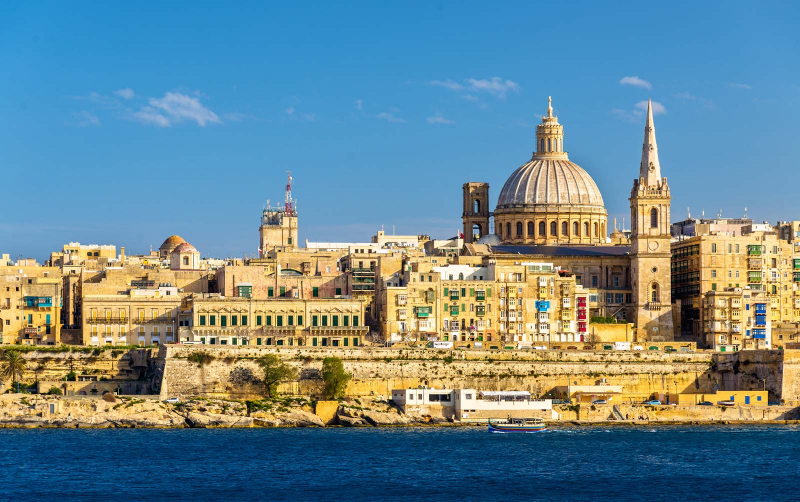
Photo: porticoandbridge.com Video: MYGEMPICTURES -
Mdina, situated on a huge hill in central Malta, is a sturdy medieval town encircled by castles. The town is the historic capital of Malta, and it is certainly a wonderful town with tiny, unpopulated valleys and breathtaking views of the island. Mdina is known as "The City of Silence" by Maltese residents and visitors since no automobiles are allowed in the city, and the town provides a calm ambiance for visitors wandering through its tiny streets and alleyways.
Mdina is a tiny town with a population of roughly 250 people living in an area of 0.9 square kilometers. Outside the city walls, however, the hamlet of Rabat, which has a population of over 11,000 people, is just a short distance away. Mdina, a medieval town with a combination of Norman and Baroque architecture, is home to a number of palaces, including the enormous and notable St. Paul's Cathedral in the town's main plaza.
Around 700 BC, the Phoenicians first settled and fortified Mdina, which was then known as Maleth. Mdina enjoys a favorable location on the island's highest point, away from the sea. The Roman ruler erected his palace at Mdina during the Roman Empire, and it is supposed that St. Paul was there after being shipwrecked in Malta. Due to extensive damage caused by an earthquake in 1693, it was essential to remodel portions of the city. The Knights of Malta renovated the church, as well as the Magisterial Palace and Palazzo Falzon, using Baroque styles.
It is worth noting that tourists visiting one of the Most Beautiful Historical Sites in Malta are often mistakenly mistaken for the standing gate at the entrance today as not the original entrance. The original entrance to the left of a bridge was subsequently built so that cars and residents could enter Mdina about 100 meters.
This attraction gives visitors the perfect start to their day in Malta to travel through time and recreate tragedies and triumphs that have unfolded before your eyes in a thriller. It is very interesting that visitors should visit Mdina after dark. Wander around the Old Capital Mdina to learn facts about important buildings, listen to some fascinating stories and gossip about the history of the heart of Malta's 7,000-year history, or walk around the kids Mdina's narrow, winding medieval road is truly an unforgettable experience.
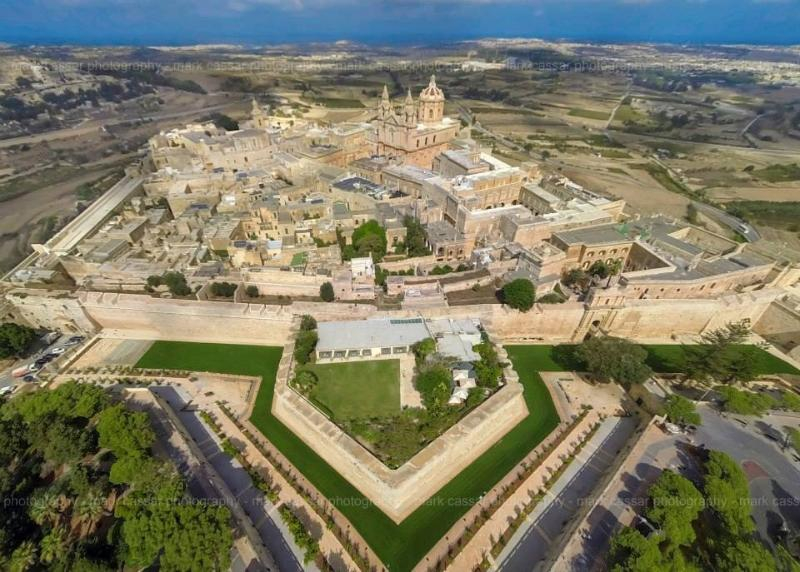
Photo: tripadvisor.co.nz Video: Travel Penguin































